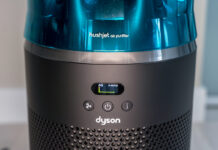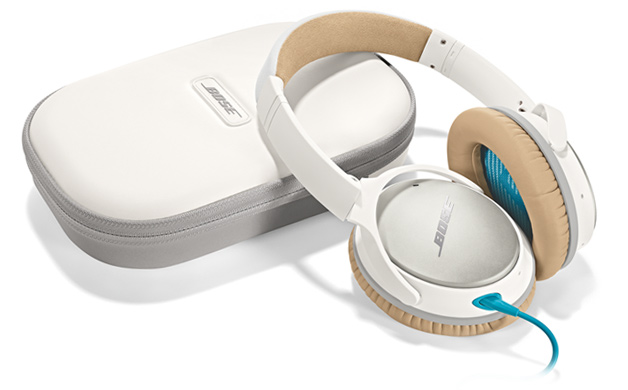 The Bose QC25 (QC stands for Quiet Comfort) noise cancelling headphones offer a comfortable and well-rounded listening experience – something one would expect from Bose. These headphones are not going to appeal to folks wanting extreme bass response nor are they aiming to make a fashion statement. There are a few nitpicks that I will address in the sound department, but overall, these are headphones that were a pleasant listen for me.
The Bose QC25 (QC stands for Quiet Comfort) noise cancelling headphones offer a comfortable and well-rounded listening experience – something one would expect from Bose. These headphones are not going to appeal to folks wanting extreme bass response nor are they aiming to make a fashion statement. There are a few nitpicks that I will address in the sound department, but overall, these are headphones that were a pleasant listen for me.
How do Noise Canceling Headphones work?
Before we get into the meat of the review, I thought a little primer on noise canceling might be helpful. There are two types of noise canceling categories out there: Passive and Active. Just to be clear “noise cancellation” is a bit of misnomer. Outside sound is not going to be cancelled outright, rather, it is going to be attenuated to one degree or another.
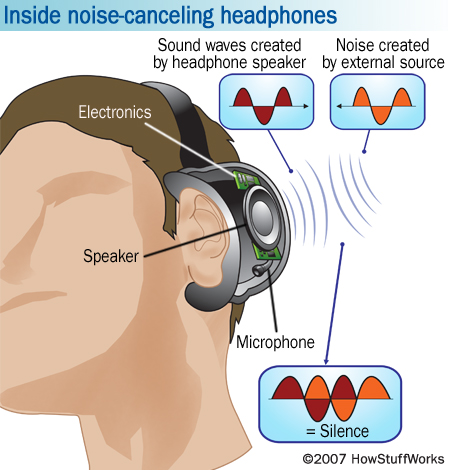 Most over-the-ear headphones employ some form of passive noise canceling. The physical construction of the headphones – the casing, the earpads, damping behind the speakers – all create a barrier between outside noise and what you’re listening to. This is passive noise cancellation.
Most over-the-ear headphones employ some form of passive noise canceling. The physical construction of the headphones – the casing, the earpads, damping behind the speakers – all create a barrier between outside noise and what you’re listening to. This is passive noise cancellation.
Active noise cancellation refers to the fact that powered electronics are employed to attenuate unwanted sound through a process called destructive interference. In the most simple terms, a microphone on the outside of the headphone picks up the exterior sound, inverses the polarity (think of it as flipping the sound upside down creating a mirror-image “opposite” copy) and plays that sound back through the headphone speaker.
When the exterior sound and the inverse copy get played at the same time, they effectively cancel each other out. In a controlled environment, this can be quite a dramatic phenomenon, but in practice, there are a number of other uncontrolled variables such as directional vectors, sound volume and timing lags inherent in processing sound in real time. All of these variables work against attaining complete noise cancellation in these kinds of products.
Stylish?
I got to review a pair of the QC25’s that came in the new white and tan colour option. Personally, the colour combination didn’t appeal to me, but I’m more of a function before form kind of guy.
The packaging is not as luxurious as the Denon Music Maniac AH-D600 I reviewed a few months back, but I must give Bose points for a very inventive and compact method of storing and carrying these headphones around.
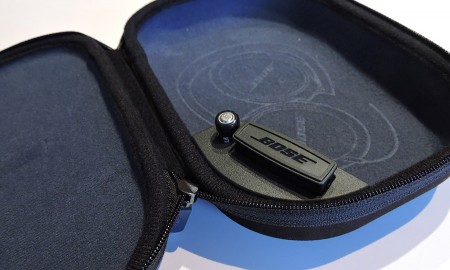 The headphone case is not usually something that you pay attention to, but I found myself pulling it out a couple of times to show people how it looks and works. There’s an etched diagram inside displaying how the headphones fold down to fit and there’s a small compartment houses an extra AAA battery and the airplane jack adapter—definitely some thinking done for the business traveller.
The headphone case is not usually something that you pay attention to, but I found myself pulling it out a couple of times to show people how it looks and works. There’s an etched diagram inside displaying how the headphones fold down to fit and there’s a small compartment houses an extra AAA battery and the airplane jack adapter—definitely some thinking done for the business traveller.
The headphones are mainly plastic and fabric construction, but feel quite sturdy. They weigh a total of 6.9 ounces or 196 grams. The headband is covered by canvas-like cloth on the top, with comfortable padding for your head. The earcups are quite plush and feel quite luxurious. The insides of the earcups, are emblazoned with large L and R letters identifying each cup’s respective ear.
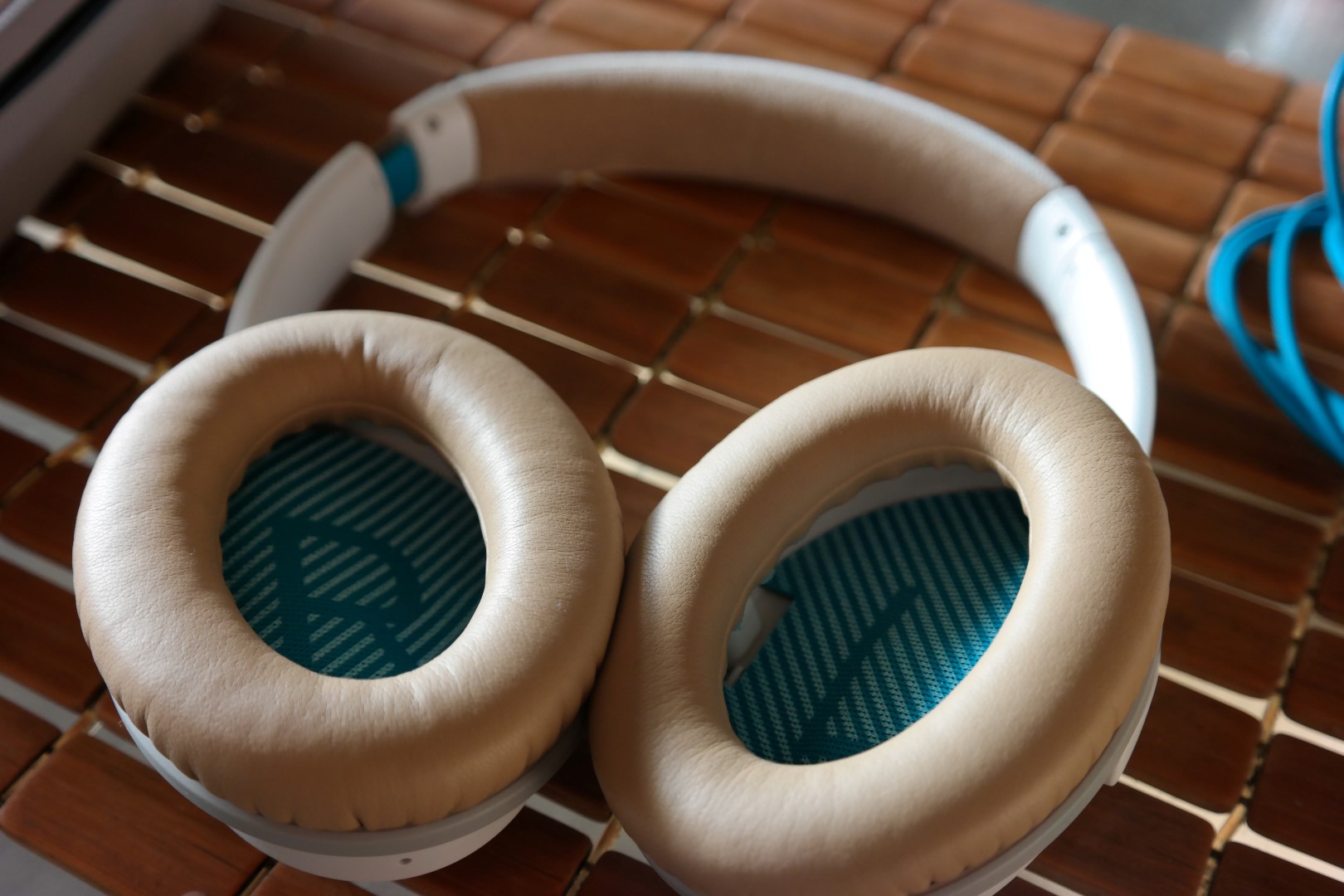 A detachable cable connects to the left earcup, and the Power switch (which light ups green and activates the noise cancellation circuitry) is located on the right ear. The QC25’s can be used without the noise cancellation circuitry, but at the expense of a severe hit to volume and frequency response – more on this later. There’s no auto-off function, so it’s not hard to leave the Power on and kill your battery quickly. The AAA battery apparently lasts 30-40 hours.
A detachable cable connects to the left earcup, and the Power switch (which light ups green and activates the noise cancellation circuitry) is located on the right ear. The QC25’s can be used without the noise cancellation circuitry, but at the expense of a severe hit to volume and frequency response – more on this later. There’s no auto-off function, so it’s not hard to leave the Power on and kill your battery quickly. The AAA battery apparently lasts 30-40 hours.
The included cable features an inline remote control and microphone designed for use with iOS devices.
The Absence of Sound
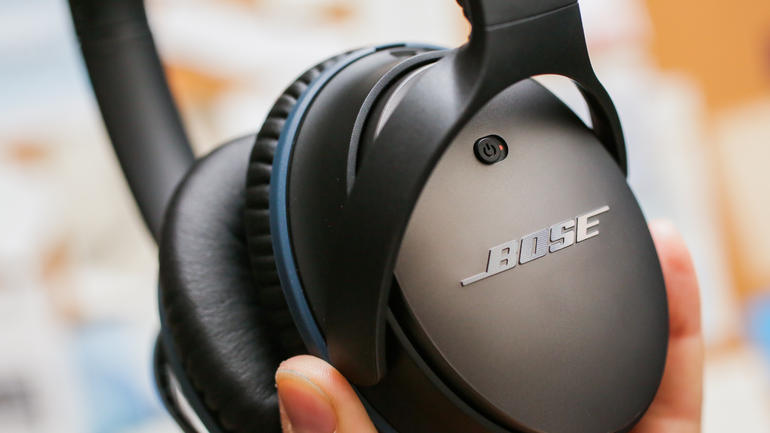 The noise cancellation feature works quite well. I tried the feature out with some more extreme loud sound sources such as kids playing video games and power saws—all being attenuated quite nicely. Although I wouldn’t suggest using the QC25’s to critically listen while cutting 2×4’s, the external noise was attenuated more than enough to clearly understand spoken word at normal listening levels.
The noise cancellation feature works quite well. I tried the feature out with some more extreme loud sound sources such as kids playing video games and power saws—all being attenuated quite nicely. Although I wouldn’t suggest using the QC25’s to critically listen while cutting 2×4’s, the external noise was attenuated more than enough to clearly understand spoken word at normal listening levels.
As pointed out earlier, noise canceling technology does not negate all external noise (nor should you expect it to). By the nature of how real-time destructive wave interference works, lower frequency ambience can be attenuated quite dramatically. Higher frequency aspects of the external environment are also subdued, but can still cut through. You will still be able to respond to sudden noise transients or people talking to you when listening to softer volume material.
The Overall Sound
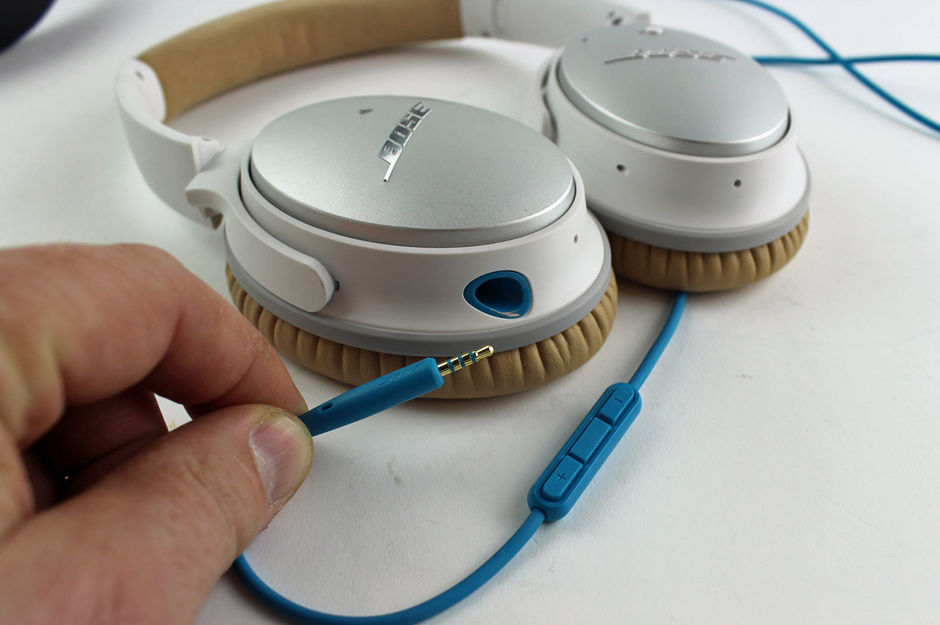 Overall, I found the sound of the QC25’s pleasing at comfortable listening levels. The overall frequency response was about right for pretty well all genres and styles I put through the headphones. I wouldn’t say that these are ideal for studio use (although I know of a couple of engineers who use the QC15’s in their studios) as they do have a sculpted frequency response.
Overall, I found the sound of the QC25’s pleasing at comfortable listening levels. The overall frequency response was about right for pretty well all genres and styles I put through the headphones. I wouldn’t say that these are ideal for studio use (although I know of a couple of engineers who use the QC15’s in their studios) as they do have a sculpted frequency response.
The bass is emphasized slightly, but is not in any way overpowering. The highs, however, are a different story. Distorted guitars can seem grating as can cymbal crashes when the volume is increased.
Not that I’d endorse listening at high volume for extended periods, but doing so with the latest Slash or Foo Fighters albums verged on unbearable as the grit from the guitars got elevated to the point of being annoying. Alternatively, I found artists who usually release what I’d term as “darker” mixes such as Muse and Massive Attack sounded quite balanced at high volume.
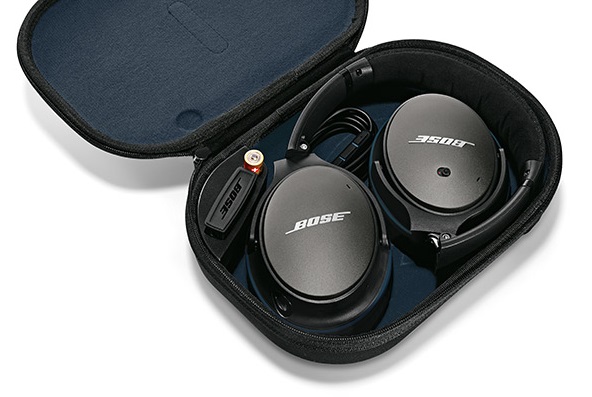 The boost in the highs (I’d say somewhere in the 10 kHz range) really makes these headphones great for listening to jazz, world and classical material. For me, there was a sense of intimacy, air and clarity that came through on those recordings.
The boost in the highs (I’d say somewhere in the 10 kHz range) really makes these headphones great for listening to jazz, world and classical material. For me, there was a sense of intimacy, air and clarity that came through on those recordings.
Unfortunately, the other downside of the frequency response on the QC25’s is that incorrectly encoded or lower bit-rate MP3’s will have their flaws emphasized even more. If you couldn’t hear the artifacts of MP3 compression before, you’ll hear them on the QC25’s.
The QC25’s can be used without the noise canceling feature engaged. I don’t think I’d list this as an advantage as there is a more than noticeable hit to volume and frequency response when the headphones are used in a passive state. I guess it’d be an advantage because I could still use the headphones, if the battery just died. But, unless I really needed to finish a podcast or phone call, I wouldn’t voluntarily choose to listen to the QC25’s in this mode.
Conclusions
I enjoyed putting these headphones through their paces. Barring the look of the white and tan model I received to review, I liked wearing the QC25’s. The band exerted enough pressure to have the headphones feel secure and snug on my ears. The sound, when the noise cancellation was engaged, was very pleasant at low and normal listening levels. I wouldn’t recommend these headphones to someone who enjoys listening to more modern genres at high volume, nor would I expect that this is the market Bose is targeting with the QC25’s.
If you’re a public transit commuter or business traveller and need a set of really good headphones to help you immerse yourself in your music or podcasts, then I’d put the QC25’s on your list to try out.
Check out the QC25’s at your local Best Buy or online. If ordering online, don’t forget that you can always take advantage of Best Buys’ exchange and return policy if the product you ordered doesn’t meet your needs!



